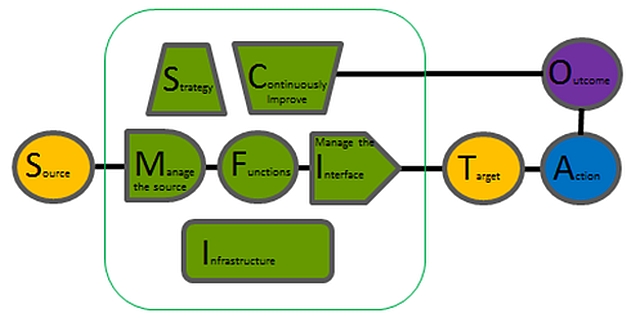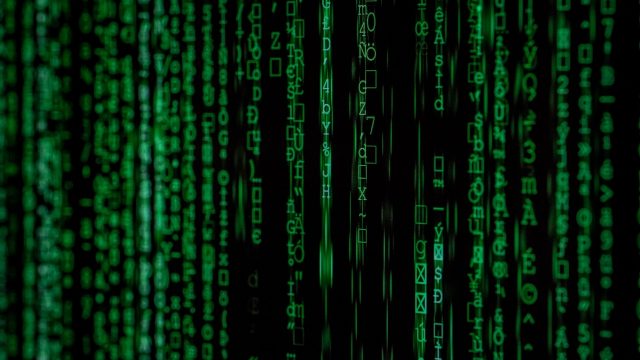
Components of a knowledge management system
Introduction
In my previous article, I discussed why a knowledge management system (KMS) is different to an information management system, and alluded to providing more details on what a KMS would look like. This article reflects my journal paper on Nuts and Bolts of a Knowledge Management System1. An information management system aims to manage the structural capital of an organisation. In a KMS, the subject being managed is the social and human capital of people associated with the organisation.
I argue that a KMS should be deliberately developed and managed to support and enhance knowledge-intensive processes, tasks or projects. A KMS should include tools, techniques and strategies tailored to specific business requirements. Such systems would include interaction with information, action and events, including interaction with other people. Because there is a conceptual difference between information and knowledge, it can be argued that there should be a difference between knowledge and information system architectures and management strategies. Therefore, a KMS is a socio-technical system that enables organizations to generate increased value from their intellectual capital and not just a software application.
What is a system?
Ropohl2 states that the concept of the ‘socio-technical system’ is to stress the reciprocal interrelationship between humans and machines and to foster the program of shaping both the technical and the social conditions of work in such a way that efficiency and humanity would not contradict each other. This reinforces the need to enable a more holistic approach to designing systems and is reflected in the emergence of ‘Design Thinking’ and Human Centric Design.
Why do we need a KMS?
Kaplan and Norton3 make a broad observation that intangible assets account for more than 75% of the average company’s value. In a study going back to 1999, an Accenture report4 identified that 94% of senior executives polled consider the comprehensive management of intangible assets is important with 50% considering it one of the top three management issues facing their company. Only 5% claim their company has a robust system that measures and tracks intangible assets. If organisations expend considerable resources on systems to manage their tangible assets, it stands to reason that it should also invest in systems to manage their intangible assets, including human and social capital.
From a comparison of other KMS models, I proposed that there are seven fundamental elements that must be in place for a system to be considered a ‘KMS’. The collective of the seven elements is referred to as a Knowledge System Architectural Model (KSAM), and are outlined as follows:
1. Strategy – Any strategy should identify the problem or the opportunity, and set the purpose/objective for the knowledge strategy. It may also link this to policy and governance arrangements and take into consideration the culture(s) of the organisation. In many cases, risk is a driver that should be identified and assessed.
2. Actors – People are central to any KMS and there are different participants with differing backgrounds and experiences. There are a number of roles involved in a KMS to ensure the system is effective. These include owners, sources, targets, enablers, boundary spanners, communities and champions.
3. Manage the Knowledge Source – Some KMSs (but not all) may hold explicit knowledge. Irrespective, there must be a source that the knowledge has come from and that relationship/interface needs to be managed. A system should address the authenticity, reliability, sufficiency and currency of the knowledge. Wherever possible, knowledge should be held by the source external to the system and leveraged when needed rather than maintaining it in the KMS as information.
4. Interface – The user requires some sort of interface with the KMS and this might be a push, pull or interactive mode. The interface may be human, structural or technological for the delivery or facilitation of knowledge or a knowledge management service. The delivery interface should address the mode, facilitation/interface, a certain style, adaptation techniques, provide access control and be accessible to people with physical restrictions or a disability. This aspect is what Nonaka refers to as ‘BA’.
5. Functionality – KM systems are developed to support and enhance knowledge-intensive processes, tasks or projects of creation, construction, identification, capturing, acquisition, selection, valuation, organization, linking, protection, structuring, formalization, visualization, transfer, transformation, distribution, retention, maintenance, refinement, revision, evolution, accessing, retrieval and last but not least, the application of knowledge.
6. Infrastructure – Most KMSs will require some form of infrastructure to enable the system to function. This may include facilities, equipment, repositories, instruments, tools, templates, software, networks and hardware.
7. Continuous improvement – A KMS should be regularly reviewed to ensure that it is meeting the objectives identified in the strategy and requirements.
A Model
The essential elements of a Knowledge Management System are shown below.

The Knowledge System Architectural Model (KSAM)
External elements
A KMS exists because there are users that require additional knowledge to address the business situations they are exposed to and the challenges they face. Wherever possible, a KMS should be a ‘pull’ or ‘interactive’ system unless there are specific operational reasons for the user to have the knowledge pushed to them prior to dealing with a situation as might happen in medical, emergency, aviation or military situations.
Each of the seven fundamental elements that make up the Knowledge System Architectural Model (KSAM) should be in place for a system to be considered an effective ‘KMS’. The elements contain a series of components that are specific to the KMS.
Conclusion
A knowledge management system differs from an information management system, primarily by the purpose for which the system is designed, implemented and managed. If KM is ‘the management processes through which organizations generate increased value from their intellectual and knowledge-based assets’, then a KMS is a socio-technical system that enables and supports the generation of that increased value. Such a system may include an information technology application as a component, but technology by itself does not constitute a KMS.
What the design process for a KMS also requires, is a process to map the knowledge that is required to flow from the source to the target. Nomination of an architectural model also allows organisations to more easily test the veracity of vendor claims in meeting the needs of the users for specific knowledge to address the challenges faced in delivery of services.
References:
- Williams, D. (2015). Nuts and Bolts of a Knowledge Management System. Journal of Information & Knowledge Management, p.1550035. ↩
- Ropohl, G. (1999). Philosophy Of Socio-Technical Systems, published in Society for Philosophy and Technology, Number 3 of Volume 4, Spring 1999. Accessed online 23 June 2013, http://scholar.lib.vt.edu/ejournals/SPT/v4_n3html/ROPOHL.html ↩
- Kaplan, R. S., & Norton, D. P. (2004). Strategy maps: Converting intangible assets into tangible outcomes. Harvard Business Press. ↩
- Ballow, J. J., Thomas, R. J., & Roos, G. (2004). Future value: The $7 trillion challenge. Journal of Applied Corporate Finance, 16(1), 71-76. ↩






I applaud the application of Systems Thinking to the question of the nature of a Knowledge Management System: it’s so important to debunk the technology-oriented POV, and so important to recognize the role of people. After all, that’s where 75% of the knowledge resides.
Some comments:
1) You have a ‘control loop’ on the right hand side of the model, and an element labelled “Action” within that loop. That in itself is fine, but you lack “Action” in the body of the system – instead you have “Functions” (which I find a little too close to the language of IT applications). Your narrative includes “Actors” but these are not include in the model… and I’d say that their role is not constrained within the “Action” element but is essential to the whole model.
2) The model appears to assume that the scope of the knowledge is static… as the “Source” is outside the body of the system. I see the overall design of the model implying that the “Source” knowledge is moved to the “Target” via some machinations. But I would argue that a KMS creates new knowledge through the “Actions” of the “Actors” and, so, the notion of the “Source” is weak. I’d rather see some purpose to the system being represented on the left, like business imperatives. They might relate to the element you have labelled as “Target”. If that was the logic, then “Outcomes” might need to be reconsidered.
3) The “Continuously Improve” element of the model is actually a function of the system and, from a Systems Thinking POV, the feedback from the element “Outcomes” only needs to connect with the body of the model i.e. “Continuously Improve” is redundant. But, as the model stands, I think the control loop might have this sequence: “Outcomes”, “Targets”, “Feedback”.
Thanks for your comments Mike
I am writing an article at the moment on knowledge flows that will address some of the issues. I will provide some clarification in response to your comments
1. My thoughts were that actors operate within the model. I’ll have a think about presenting them without compartmentalizing the human element. The main actors are at the source and the target. I am comfortable with the systems having ‘functions’. Actions are deliberately separate because we use a KMS to enable us to take actions to deliver customer-facing good or services.
2. Knowledge of the Source is not meant to be static or weak. That is why it is deliberately outside the ‘box’. Disagree that the purpose of a KMS is only to create knowledge. Business imperatives come from Strategy and the demand for knowledge from the target to undertake action. the model probably needs reference to an external organizational driver
3. disagree – just because there is feedback, does not mean that the system improves. there needs to be an element that is reflective, analytical and creative. ,
Hi Dave
I would like to ask a question. What would you say are Categories of Knowledge management systems and their types?
Regards,
Collin
Collin
I have a list that I have been tinkering with a would like some feedback on:
Types of KM Technology Systems
• Knowledge mapping/auditing
• Knowledge discovery/creation/innovation
• Knowledge capture/conversion (into Structural capital/information)
• Learning Management Systems
• Continuous Improvement Systems
• Decision Support Systems
• Connecting people systems
• Knowledge brokering systems
• Expertise locators systems
• Aggregating, combining and synthesizing systems
• Sharing or controlling access to knowledge systems
Thank you very much Dave
Hello Dave,
Thanks for article here. Would you know institutions offering international short courses (2-3 week) on knowledge management ?
Hi Wycliffe,
A great place to look for information on KM courses is the KM Education Hub.
Best regards,
Bruce.
Dave, I would argue that one of the differences between KMS and Info-tech are their architectures. Traditional tech is logic-based. Logic requires self-consistency. It is designed to execute self-consistent processes and look for self-consistent answers.. However, people think rationally. Rationality is purposefully imaginative, goal oriented, considers all known variables, or seeks to discover those variables to solve problems. Rationality is concept oriented and embodies context, meaning, and purpose. Traditional tech strips away context, or descriptively replicates artificial context. It seeks out digital patterns, and if it does create content based upon those patterns, the outcome pattern oriented and artificial. To me, this is one of those transparent insidious impacts of traditional tech. One of the reasons I like your ACTION point – continuous improvement is a natural process. This is an important article. I am happy to see that you are driving this point.